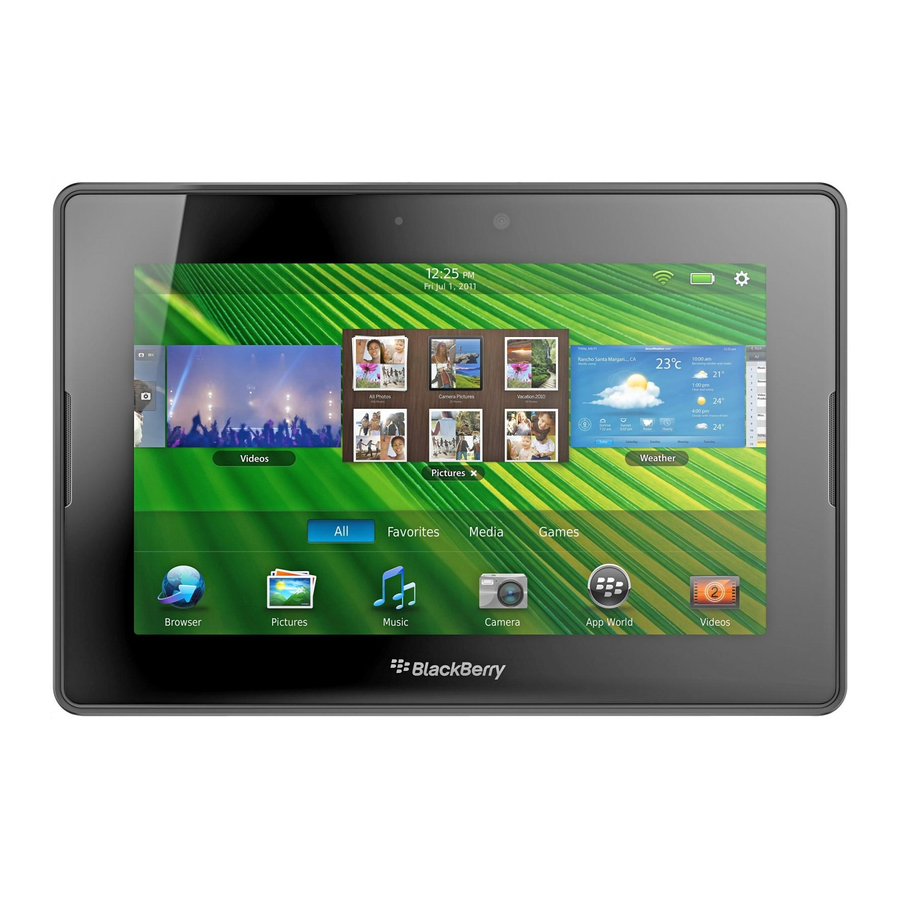Blackberry PlayBook Tablet Ui Manuallines - Page 8
Browse online or download pdf Ui Manuallines for Tablet Blackberry PlayBook Tablet. Blackberry PlayBook Tablet 39 pages. Tablet
Also for Blackberry PlayBook Tablet: Specifications (21 pages), Specfications (21 pages), User Manual (48 pages), Safety And Product Information (19 pages), Security Technical Overview (46 pages), User Manual (42 pages), Quick Start Manual (2 pages), User Manual (34 pages)

